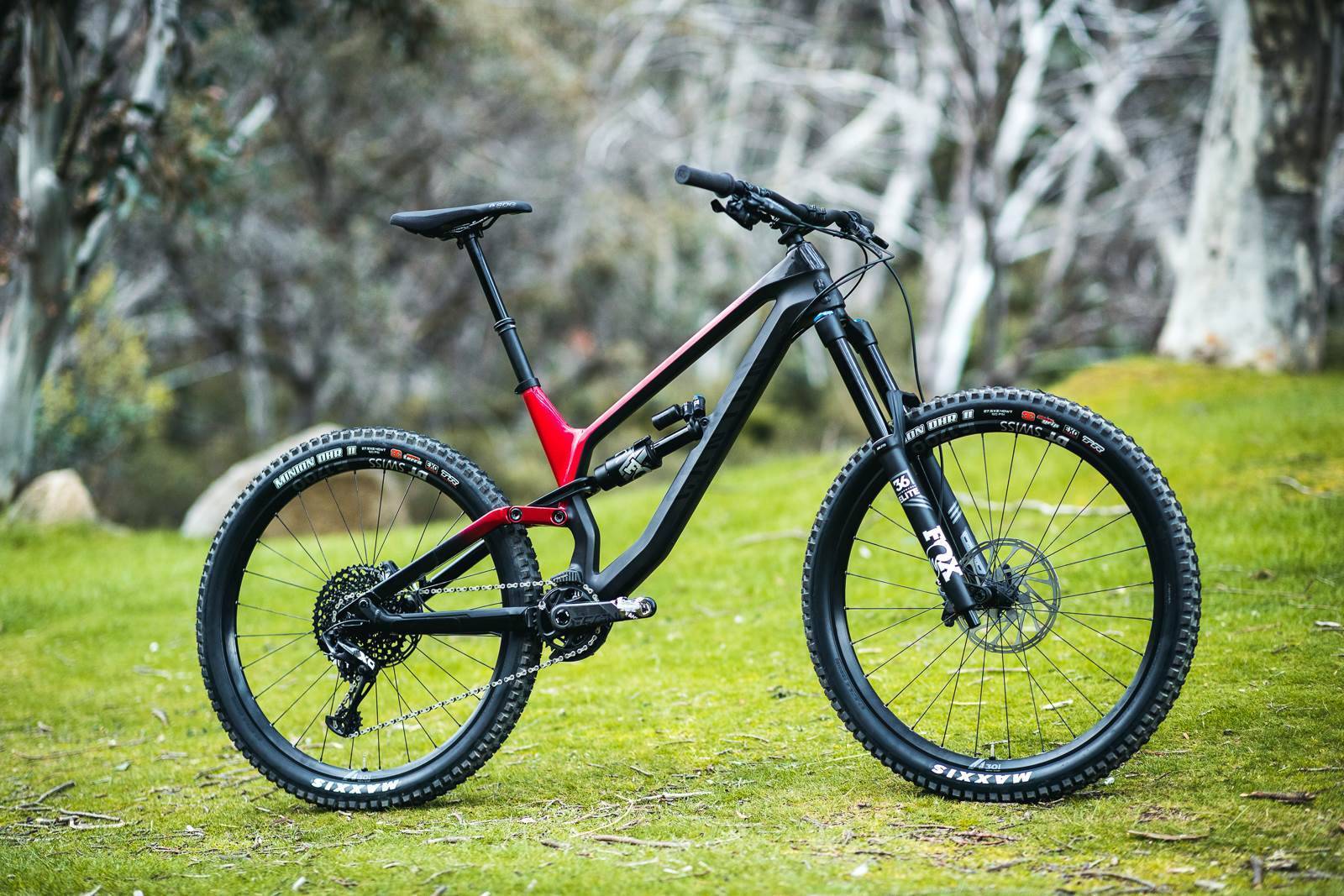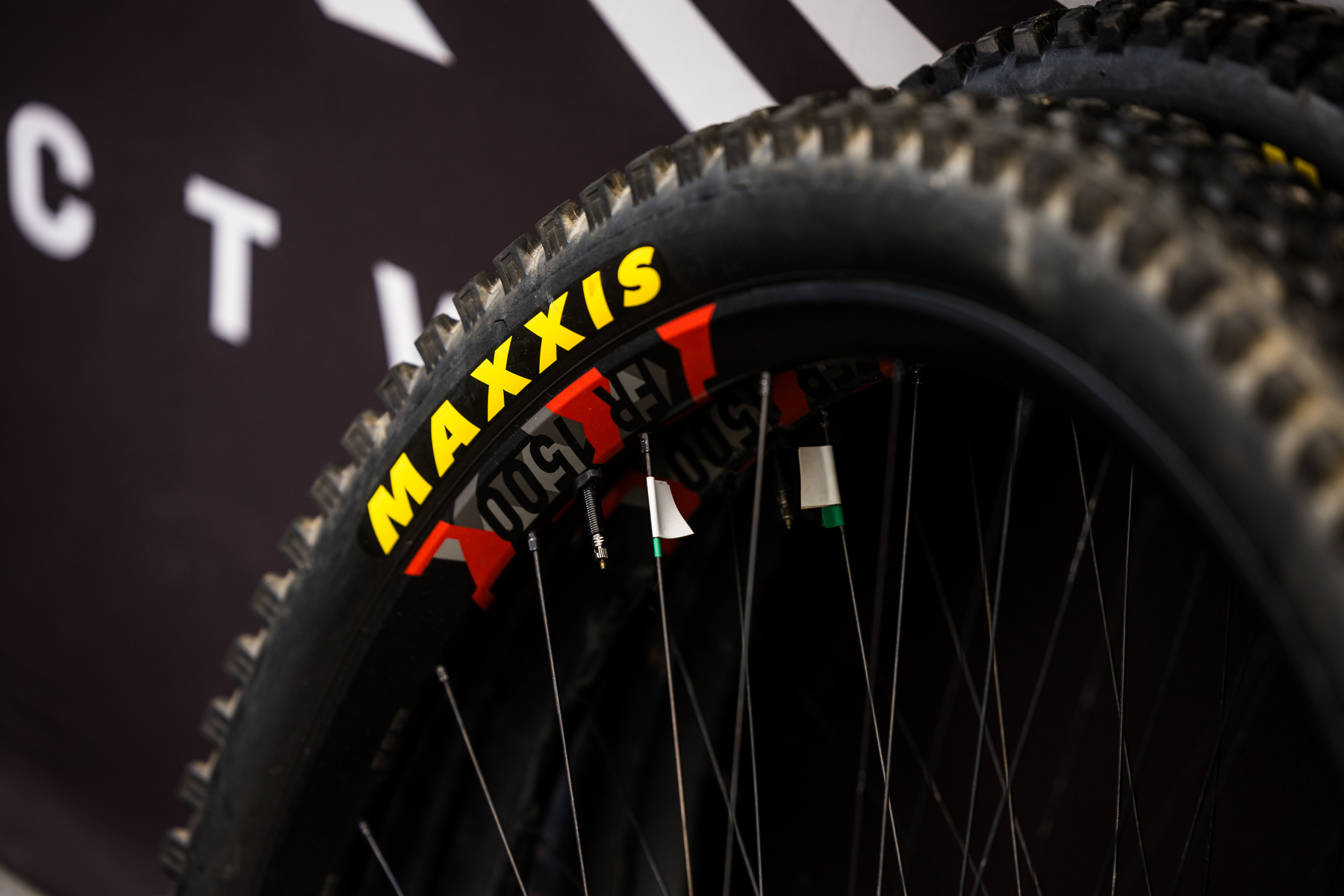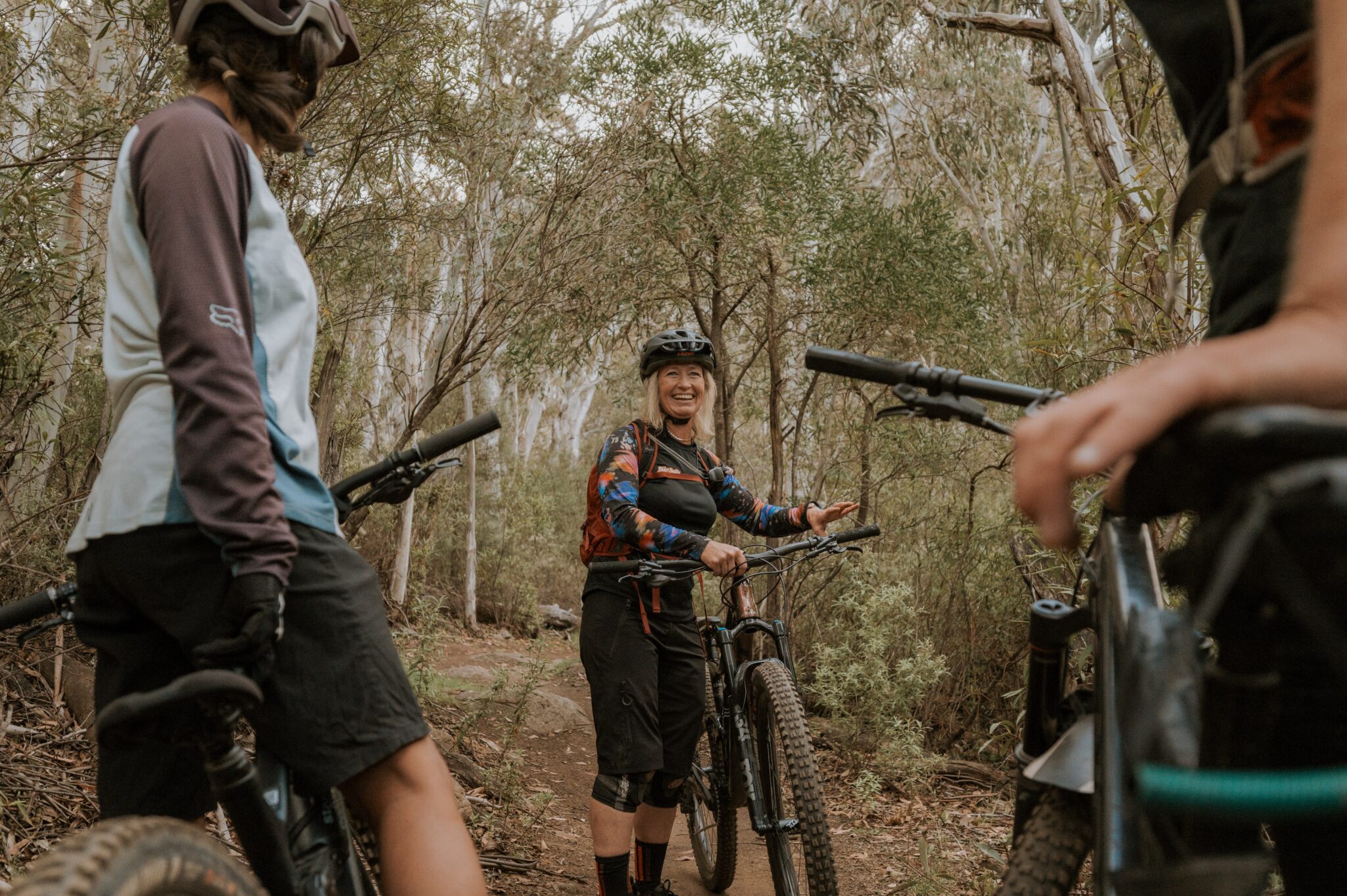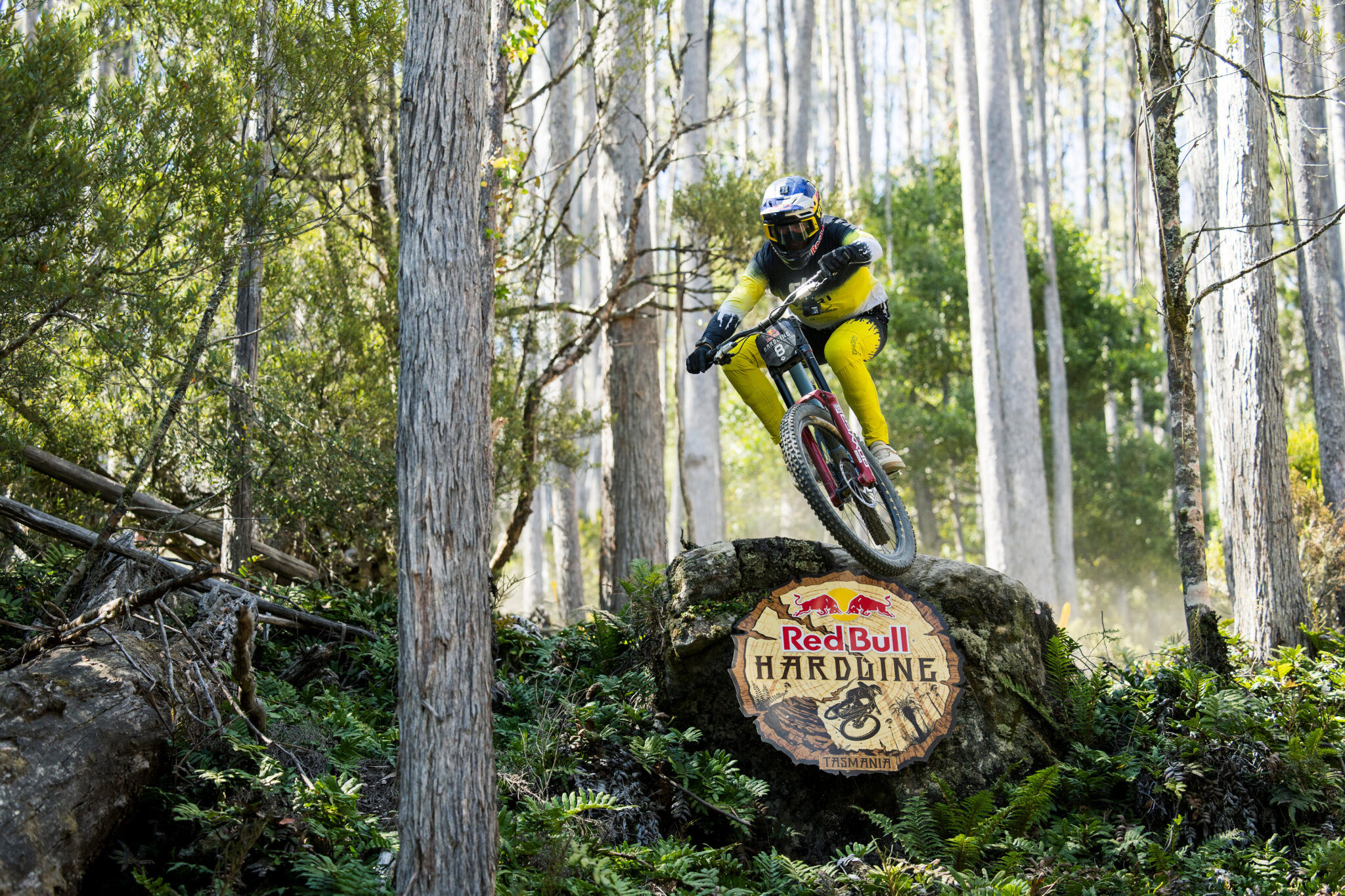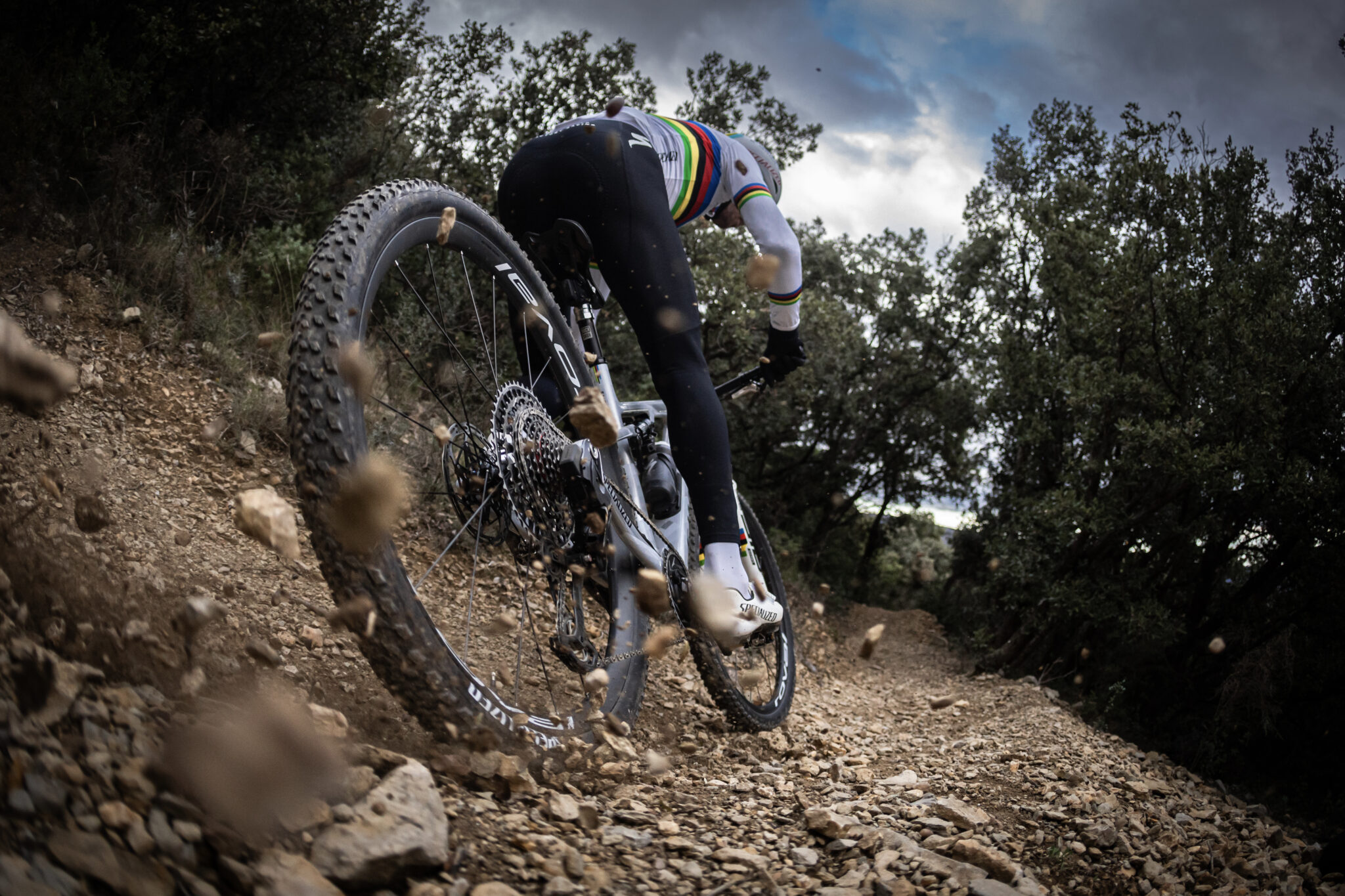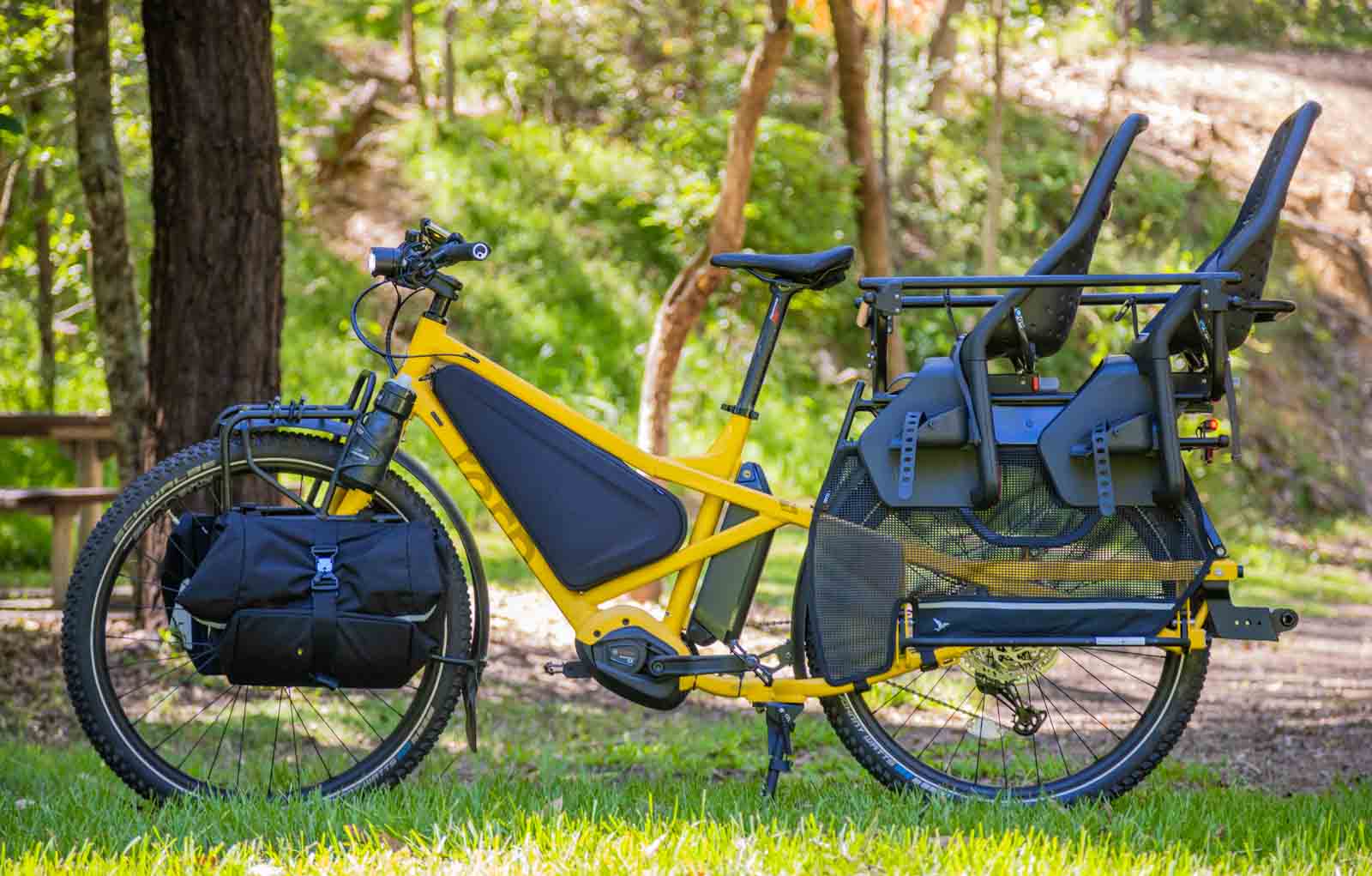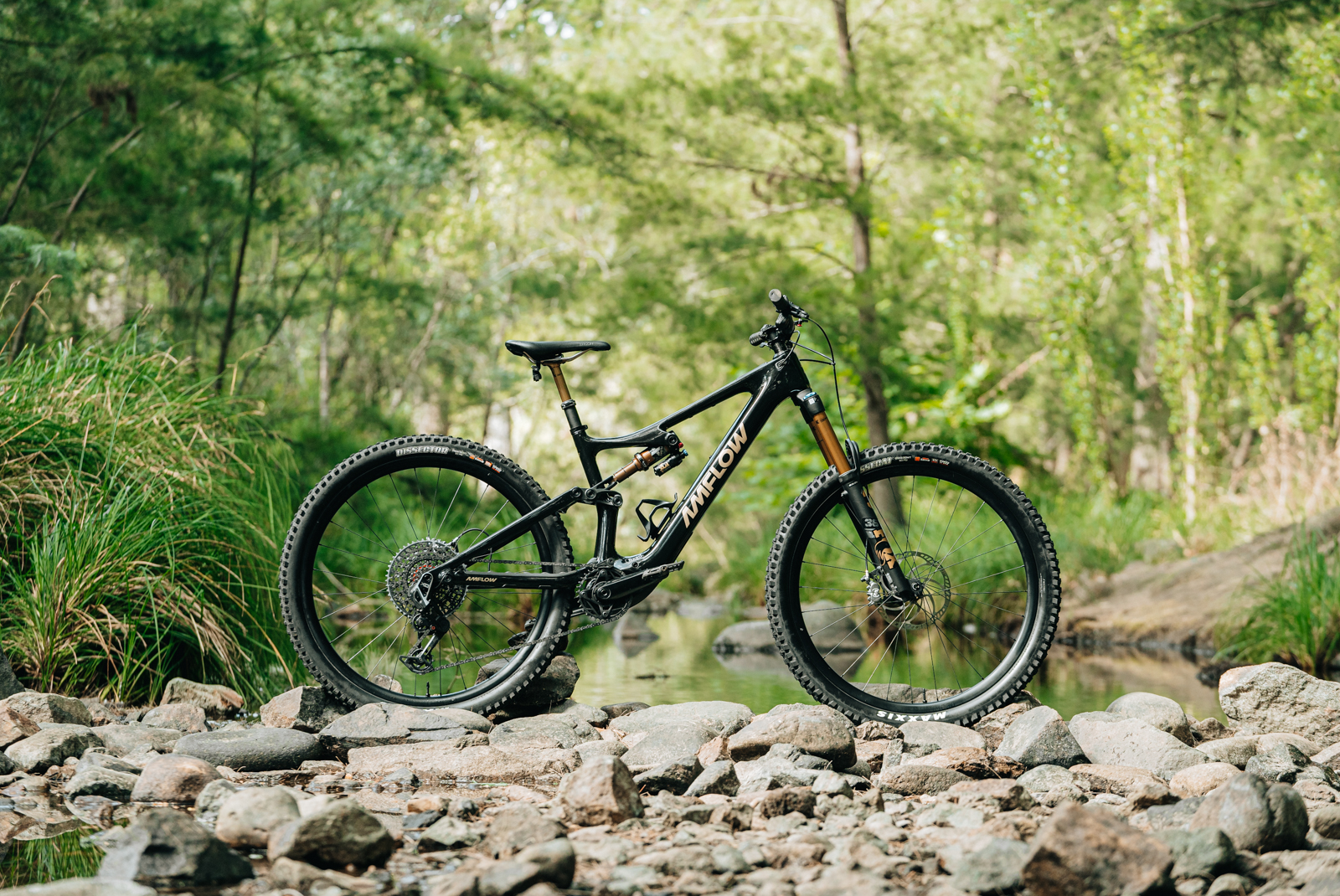TESTED: Canyon Torque CF 8.0
Testing Canyon's gravity all-rounder!
Words: Nick Waygood Photos: Nick Waygood/Ryan Walsch
Canyon quickly made their presence known via direct to consumer sales, allowing customers to buy a bike across all genres of cycling, including a wide range of mountain bikes. Canyon started delivering to Australia direct from Germany at the start of 2016, and their presence on the trails have continued to grow. You might have already read our review of the 130mm-travel Canyon Neuron, so we’re no stranger to the bikes that Canyon build and their precision builds and delivery times. With a reputation for bang-for-buck quality mountain bikes, we ordered in a Canyon Torque to test during our visit to Thredbo’s Cannonball Festival in early December.
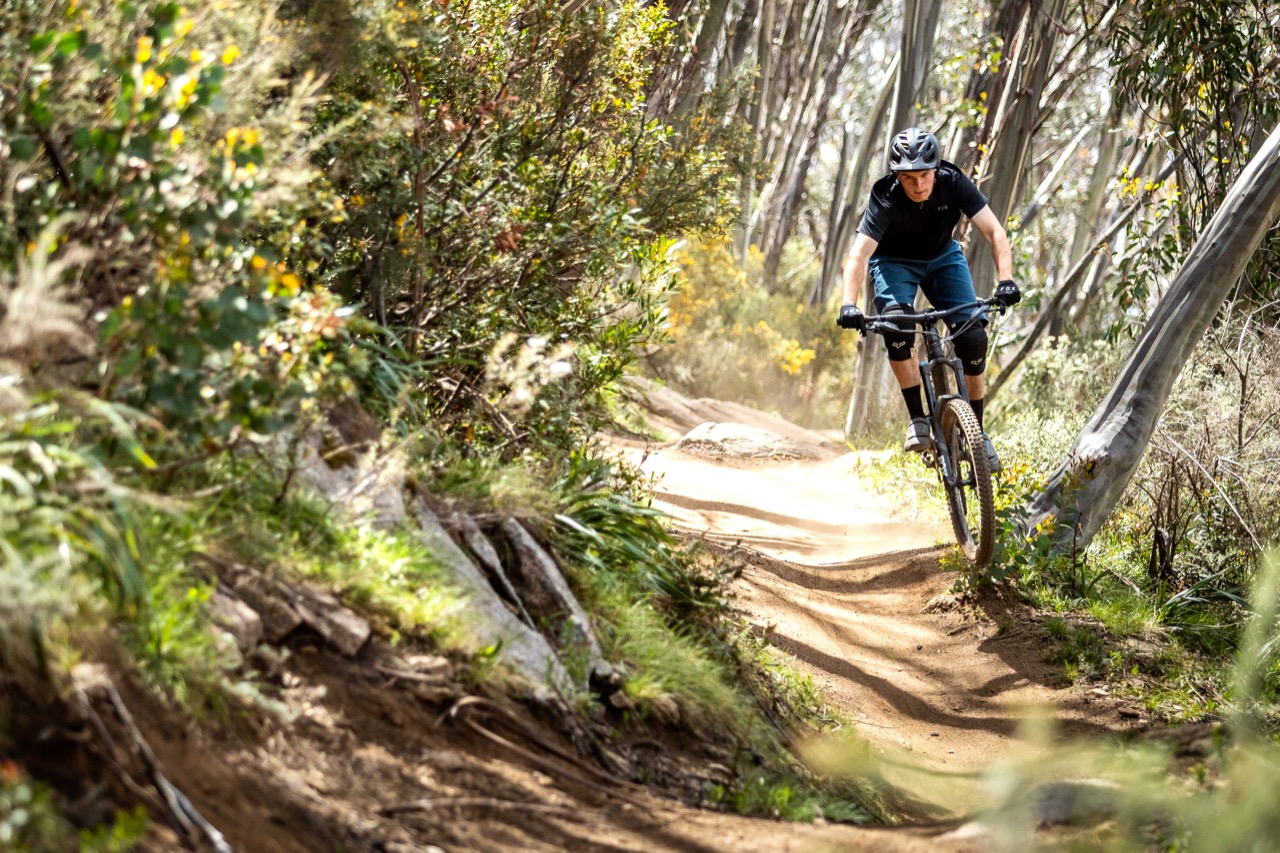
In the Torque range, the CF 8.0 sits just below the top, with a total of 5 models available, as well as the frame set. Canyon has 3 carbon fibre Torques, each with carbon in the front triangle and aluminium in the rear. The remainder 2 models are both aluminium, offering a wide range to select from when choosing what to buy on a lazy Sunday morning, or midnight online shopping frenzy.
By Canyon’s personal definition, this 180mm-travel beast of a bike is the perfect all rounder. With slack angles like a downhill bike, enough suspension for a Redbull Rampage run, a dropper and a SRAM Eagle and CODE combination, this bike certainly has everything you’d ever need to wake up in the morning with a run down the Thredbo Valley Trail, followed by bombing runs of the Cannonball Downhill all afternoon.
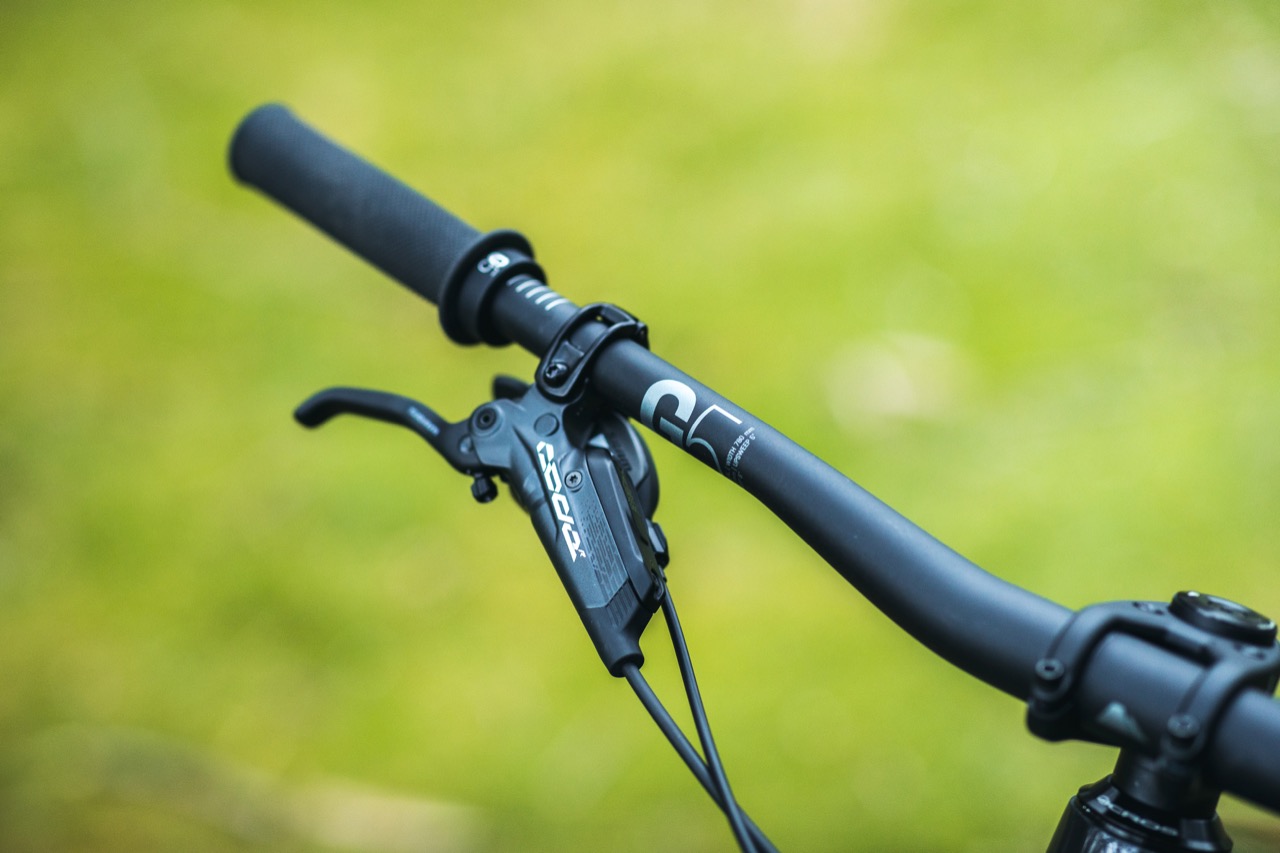
In the current market, brands are coming back into the long-travel enduro/downhill bikes capable of climbing as quickly as they descend, with 65 degree head-angles and up to 170mm of travel between both 27 and 29 inch wheel sizes. Bikes like Rocky Mountain’s Slayer, or Specialized’s new Enduro springs to mind as bikes capable of taking on anything you feel confident throwing yourself down, and more.
Initial Impressions
Out of the box, the Canyon Torque is built up with a carbon fibre front half and alloy rear for the benefits of rigidity. The carbon front triangle helps save on weight whilst adding to the aesthetic look of the bike, with the aluminum rear triangle is stiff in the back and keeps the overall cost of the bike in check.
Tester: Nick Waygood
Riding Experience: Full time photographer, part time mountain-biker.
Generally Rides: 2019 YT Jeffsy 27
Height: 185cm
Weight: 81kg
Bike Test Track: Thredbo
Canyon's paint job on the Torque sees a metallic dark-red that fades into a mix of exposed black carbon fibre and gloss black through the entirety of the frame. The aesthetics continue with the long-travel suspension, 780mm wide handlebars, and huge brake rotors to give the bike a look of pure descending luxury.
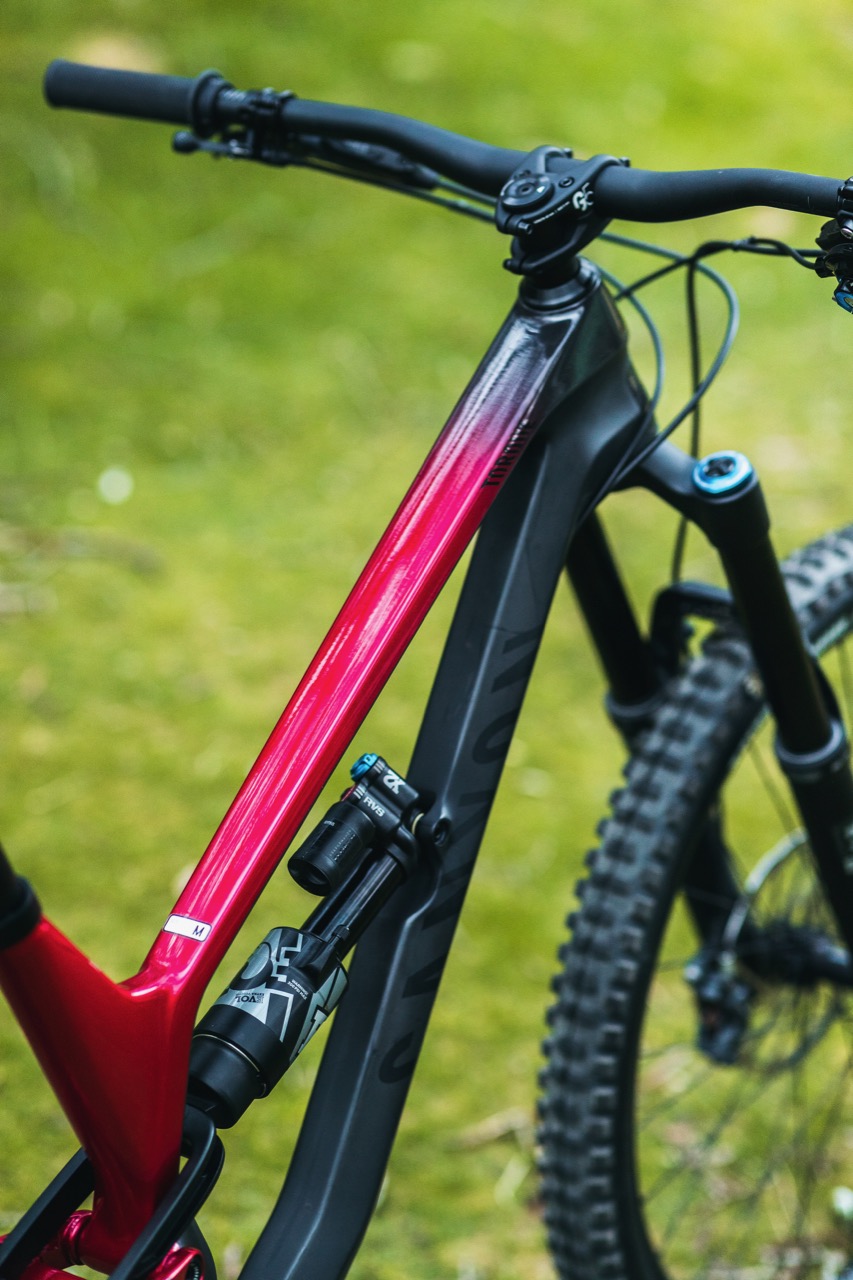
The clean look is continued with Canyon’s cable-routing system, with the dropper, rear brake, and rear derailleur cables all being routed underneath a plastic bash-plate on the bike’s downtube. The carbon is very clean and smooth, allowing easy access to properly clean the bike after a day in the hills. It’s also nice to see Canyon setting up tubeless straight from the factory.
With the bike almost assembled straight out of the box, all that’s required when building the Torque up is to remove the packaging, slide in the front wheel, dropper post, and handlebars, before some standard bike setup like air pressures and cockpit setup.
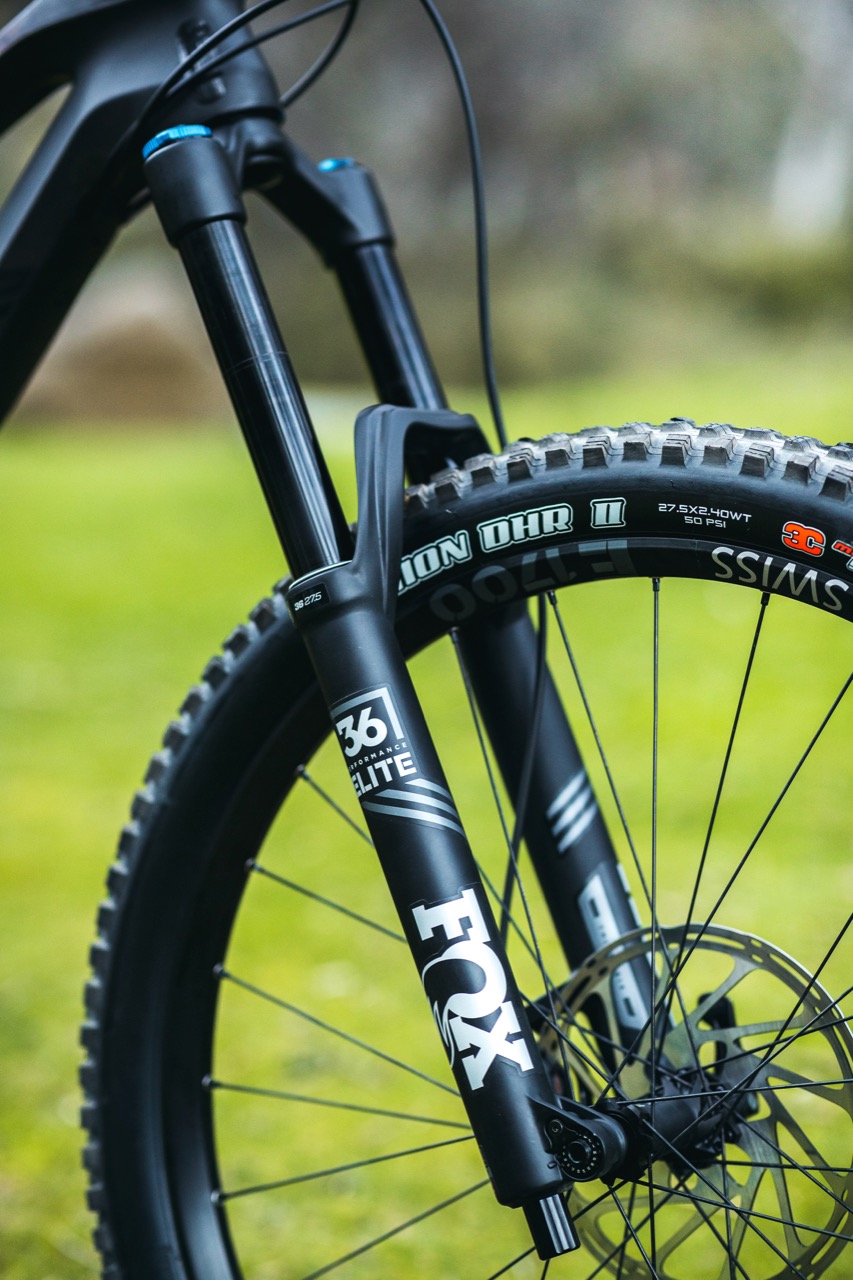
Before we hit the trails, a quick check-over revealed the chain was only one link too long. With a quick-link already installed, it was easy to break one link out of the chain, re-attach, and tune the derailleur to suit the huge Eagle 50-tooth rear cog.
With the confirmed weight of 14.90kg with pedals, I had minor concerns of how the bike would climb with such slack angles and long-travel suspension, seeing Canyon claims the Torque can be an all-rounder. Eagle definitely made pinch climbs a little easier.
On The Trail
The Torque feels extremely playful and ready to be thrown down a trail. I’m 185cm tall, and the Torque is a bigger medium than what would be standard; however the shorter seat tube length of the medium had me setting up the dropper to be quite high in order to achieve the correct seat height.
I would normally order a large – but this test bike was ordered for another rider who was not able to complete the test – and I was still super keen to get on board the Canyon Torque. In the saddle on climbs, the bike does feel slightly sluggish with the suspension set up to 35% sag, and the front wheel raking out the front with the 65 degree head angle. SRAM’s Eagle was super snappy on the gear changes, with the 50-tooth cog making steep climbs effortless despite the sluggish feeling.
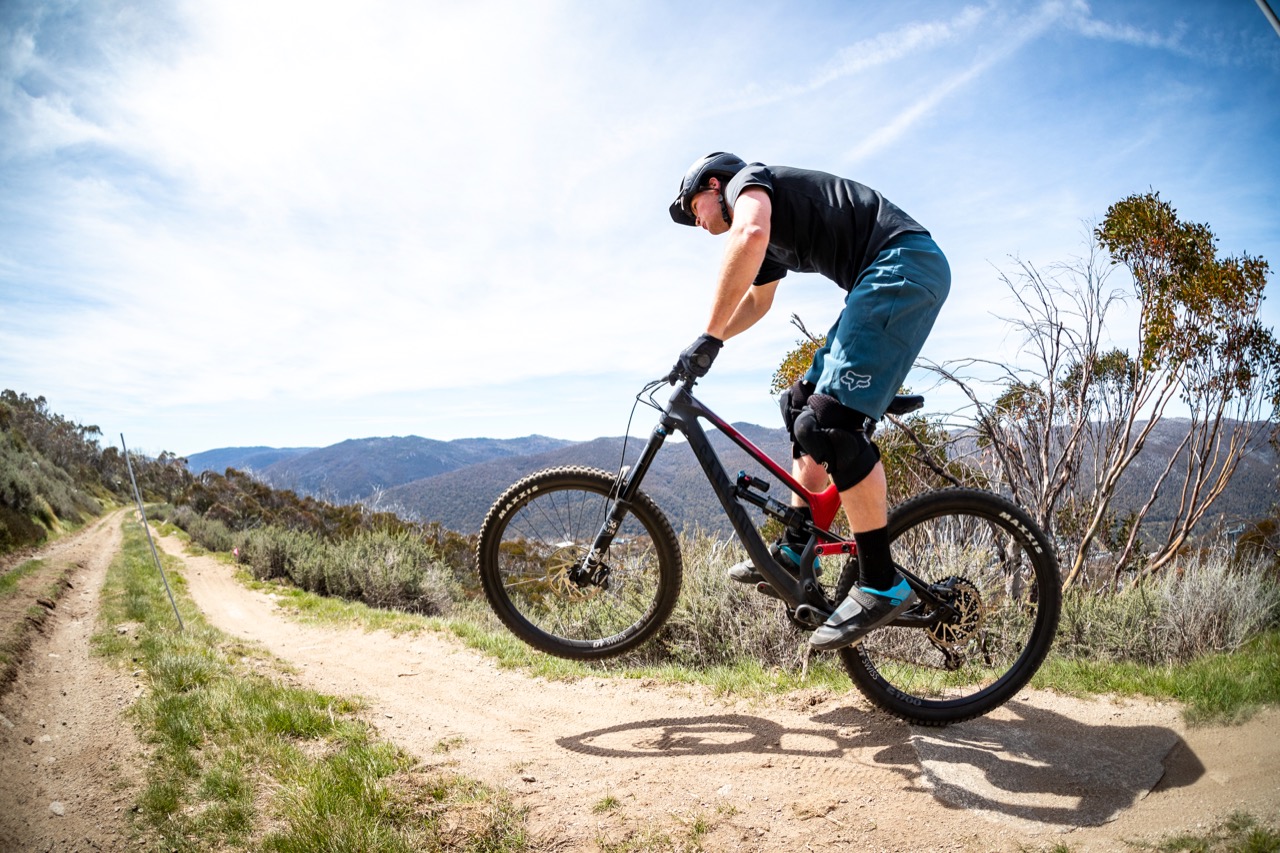
On the medium the wheelbase came out to 1195mm combined with a short chainstay length of 428mm across all frame sizes. I felt more than comfortable throwing the bike sideways or smashing down technical rock gardens without any fear of the bike riding me out of control. The grippy Maxxis tyres helped tremendously with constant grip on Thredbo’s hero-dirt and granite slabs in between the berms and jumps. For the test, I set tyre pressures up with 28psi in the front and 26psi in the rear.
Canyon takes control of the cockpit with their G5 range, found in the 40mm-long stem, 780mm-wide 20mm-rise handlebars, and flanged grips (which is a big yes from me!). With the bike only weighing just shy of 15kgs, paired with that short wheelbase and chainstay, it’s plenty easy to throw the bike into sharp turns and rail around sweeping corners without having to brake-check the entrance. The larger travel does result in a higher standover height, forcing the centre-of-gravity of rider and bike higher.
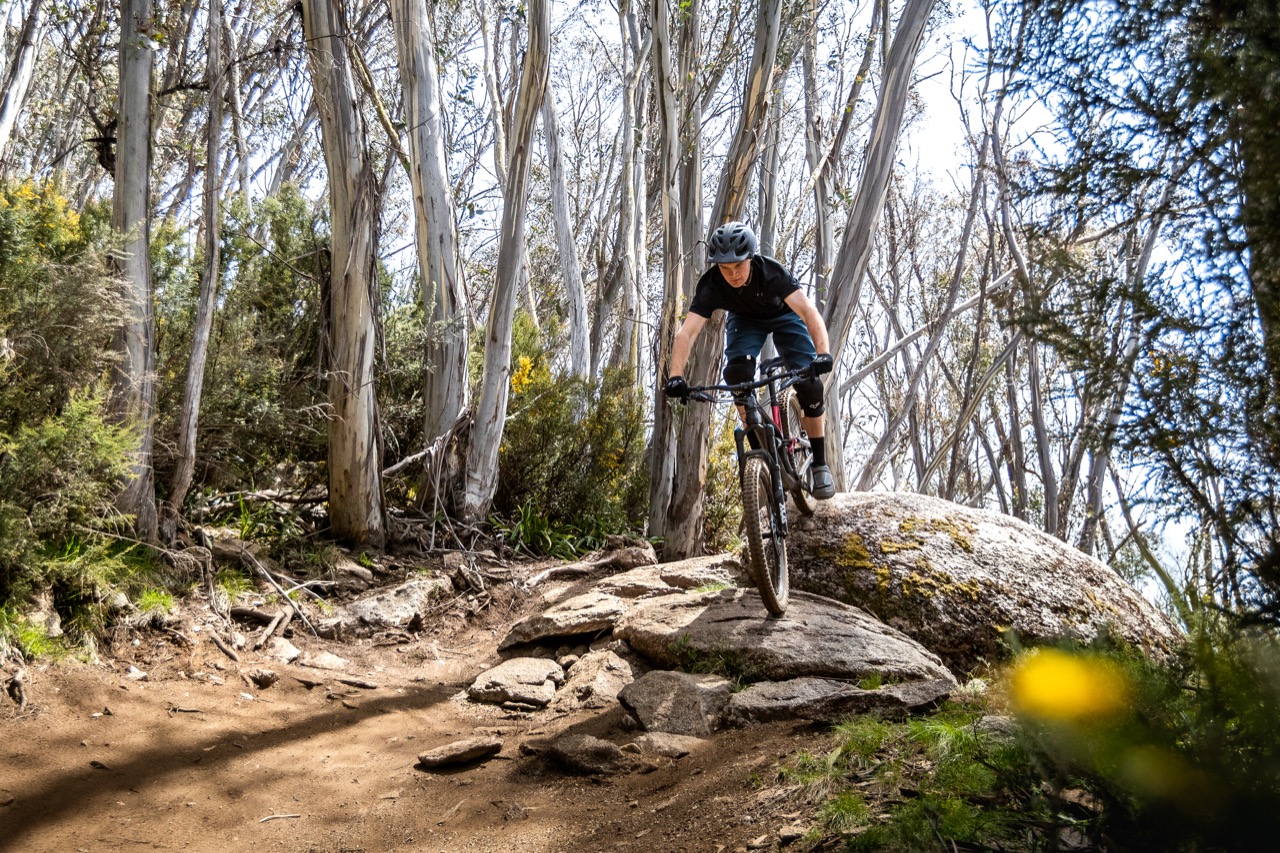
The Torque is nearly the perfect all-rounder, performing exceptionally whenever you want it to, but primarily in a gravity based orientation. The suspension is like a bouncy jumping castle given how much is available, but the Fox units have the adjustments required to climb efficiently when seated, and really soak up the big hits and janky terrain – all proving this bike can go up to get down.
I found the Torque really shined when sent down steeper descents and over lipped jumps. I was hugely surprised by how capable this machine is – starting off on smaller drops and jumps, the bike was begging for more and more and so I kept going, taking it down the Thredbo Cannonball run with camera pack and launching silly gaps. With so much speed, the SRAM Code R brakes are definitely a requirement, and worked an absolute treat.
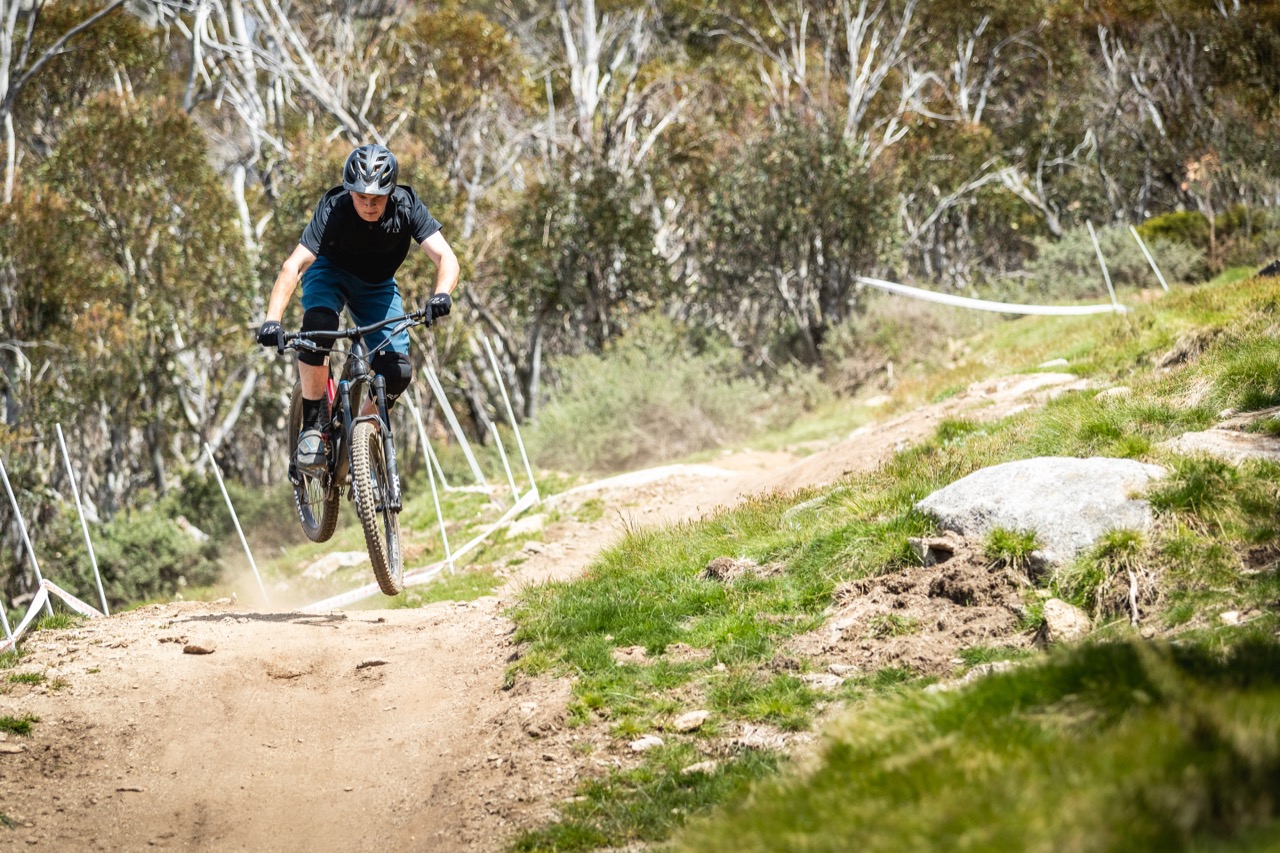
The 74-degree seat tube angle combined with the slack head angle does mean the bike requires more effort on climbs – your bodyweight sits over the rear wheel much more, forcing the rear shock to sag when set up with the correct PSI. It’s a nice little addition to see a compression lockout adjustment, which slows down the rear shock nicely, allowing more of the pedal power to be pushed through the rear wheel and not the rear shock. The Torque will get you uphill, but the bike is all about descending prowess.
When Canyon launched the Torque, you could see it shredding down Whistler Bike Park with one of their famous freeriders behind the handlebars, like Thomas Genon or Darren Berrecloth. It’s marketed as their do-it-all bike park bike, allowing stoked riders to take on everything from the top of the Garbanzo zone to the bottom of A-Line. In Canyon’s range, it sits at the top of the Enduro-specific bikes, with the Spectral and Strive underneath with 160mm or 150mm of travel, and 29-inched-wheels thrown on the Strive as well.
Canyon has definitely hit a nail on the head, providing potential customers with the option of a mini downhill bike, with a dropper post and SRAM Eagle as factory spec on all models.
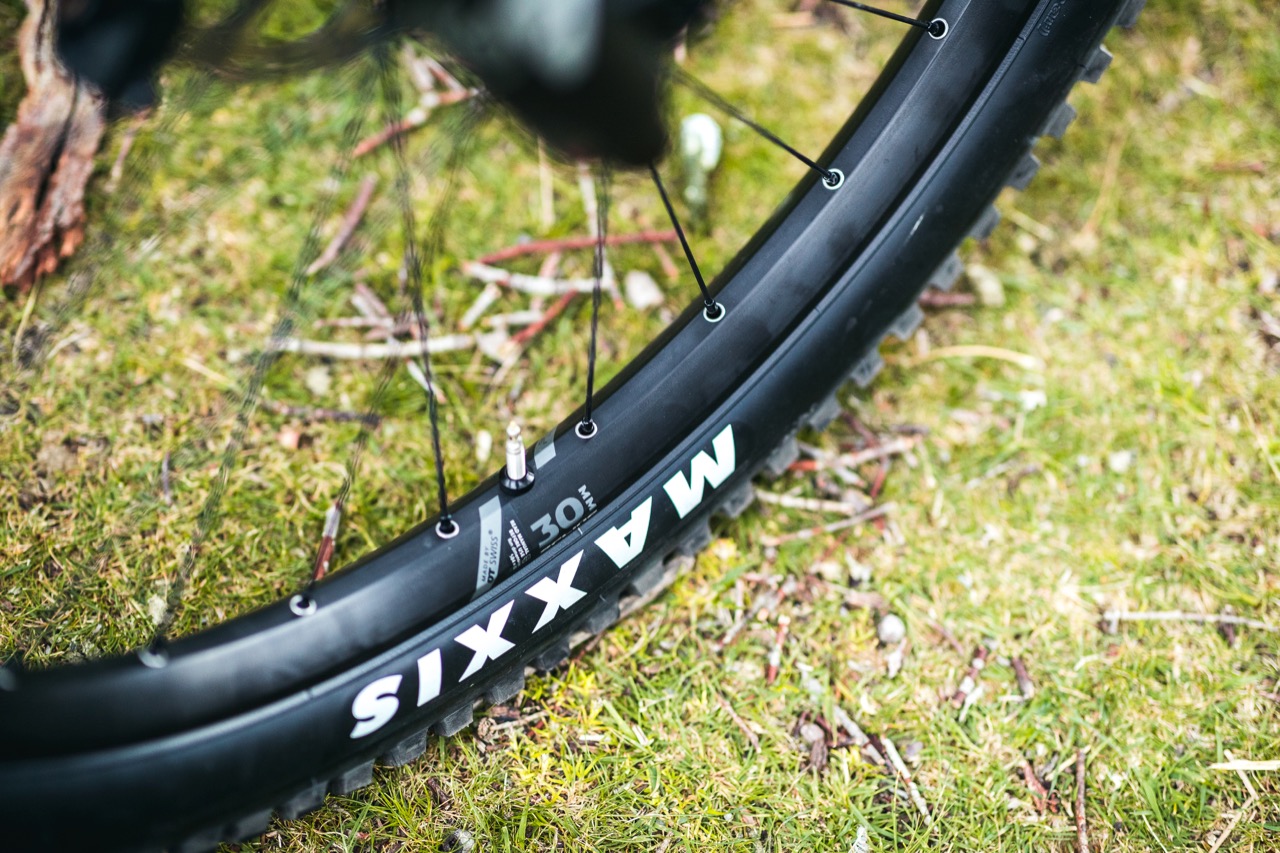
As I rode the Canyon more and more, the brakes were bedded in from new and the suspension became worn-in, giving us the experience we were after of a descending machine. I can be honest in saying a couple of rim bashes occurred on sharp rocks, and I was surprised to see the rims and tyres still holding air and running true!
With several other options on the market for mini downhill bikes, the Canyon Torque performs brilliantly. Canyon are known for offering bang-for-buck bikes that are built to last with quality components and materials. A bike with around 180mm of travel is a whole lot of bike, and I was pleasantly surprised with how versatile it was, but it’s true calling is for sending.
Our Take
When the Canyon Torque CF 8.0 was an easy bike to build out of the box, and once on the trail it was clear that it’s a stronger bike on the descents than it is on the climbs. If you’re after a trail bike, Canyon definitely have options more suited to that style like the 130mm Neuron that we reviewed late last year. The Canyon Torque is a bike for light climbing and heavy descending.
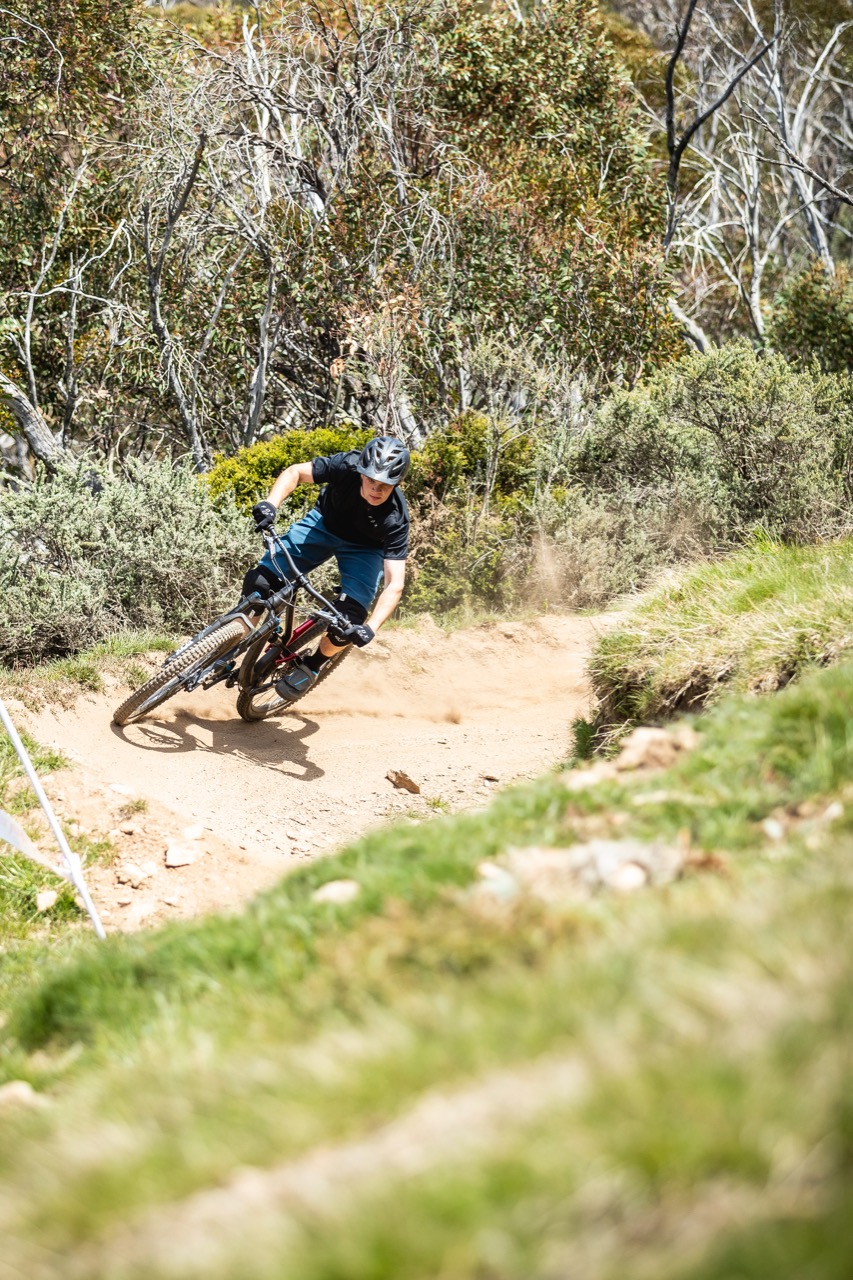
As value for money, you can’t go past something like the Torque – with the tested CF 8.0 at $6,300, we had quality components right through the bike with the Fox Performance suspension and SRAM Eagle, with DT Swiss and Maxxis on the wheel set. Plenty of things have room for improvement, but with Canyon’s range, the Torque stands out as one that needs little to no changes, without becoming a different model that’s already found on their website. A steeper seat tube angle combined with an enduro-specific rear shock (over a DHX2) would improve the climbing ability, although you’d then lose performance on the descents. This is the park bike in Canyon’s range, and if you live to shuttle and put up with pedal ups, you’re sure to find a model in the Torque range to suit.
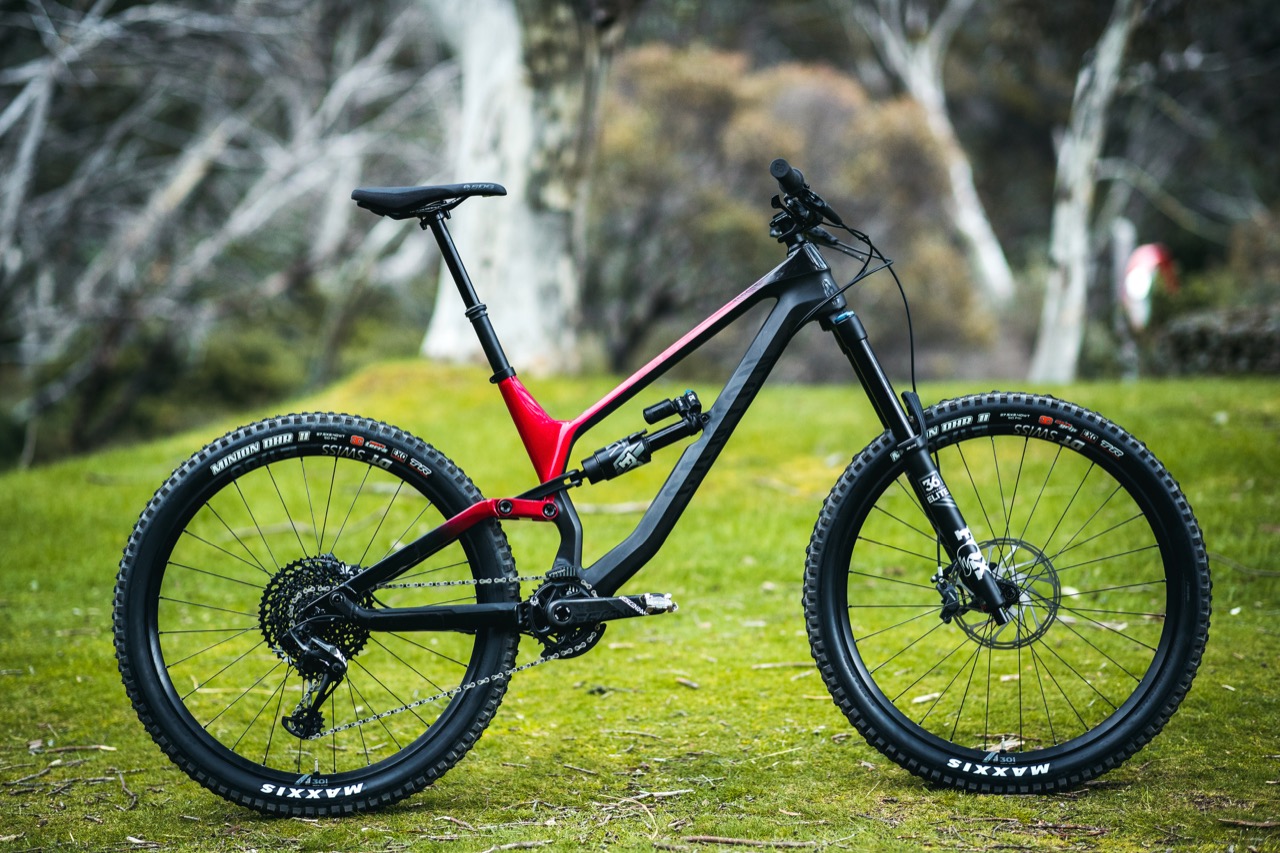
Brand Canyon
Model Torque CF 8.0
RRP $6,299
Weight 14.90kg (with pedals)
From canyon.com
Available Sizes S, M (medium), L, XL
Frame Material Carbon fibre front, alloy rear
Fork Fox 36 Performance GRIP, 180mm
Shock Fox Float X2 Performance, 175mm
Shifters SRAM XO Eagle, 12sp
Derailleur SRAM XO1 Eagle
Crank Truvativ Descendant Carbon DUB 32T
Bottom bracket SRAM BSA DUB
Chain SRAM 12sp
Cassette SRAM XG-1275 Eagle, 10-50t (12sp)
Wheel set DT Swiss E1700, 30mm inner, 27.5”
Tyres Maxxis Minion DHR II 2.4”, Maxx Terra 3C EXO TR
Brakes SRAM Code R 200/180mm
Stem Canyon G5 40mm
Handlebars Canyon G5 780mm, 25mm rise
Seatpost Fox Transfer Performance Elite 150mm
Saddle SDG Radar

